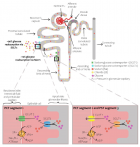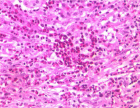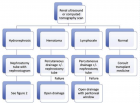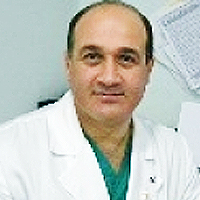About Agricultural Research Center
Agricultural Research Center
Articles by Agricultural Research Center
Strobilurins: New group of fungicides
Published on: 10th August, 2021
OCLC Number/Unique Identifier: 9204628235
Strobilurin is a group of natural products and their synthetic analogs have been widely used to control and prevent fungal diseases. Strobilurins were firstly isolated in 1977 from the mycelium of Strobilurus tenacellus, a saprobic Basidiomycete fungus causing wood-rotting on forest trees. This group of pesticides was designed to manage fungal pathogens classes such as Ascomycetes, Basidiomycetes, and Oomycetes. Also, Strobilurin commercialized included derivatives such as are azoxystrobin, kresoxim-methyl, picoxystrobin, fluoxastrobin, oryzastrobin, dimoxystrobin, pyraclostrobin and trifloxystrobin. This group is a part of the larger group of QoI inhibitors, which act to inhibit the respiratory chain at the level of Complex III. Strobilurins group control an unusually wide array of fungal diseases, included water molds, downy mildews, powdery mildews, leaf spotting and rusts. This group are used on cereals, field crops, fruits, tree nuts, vegetables, turfgrasses and ornamentals. Also, Strobilurins found to enhance the plant growth in some cases.
The smart agriculture applications (current and future)
Published on: 5th December, 2022
Smart agriculture applications (monitoring, sensing, automation and control) of micro-climate and environmental conditions for different agriculture production sectors and scales, decision-makers and researchers need to take it into consideration to strengthen the efforts of mitigation and adaption of climate change impacts as well as maximize the natural resources use efficiencies and food production. Motivate the farmers to implement smart agriculture applications, especially in developed and poor countries, strong cooperation for technology transfer and build up the technology infrastructure of information and communication (ICT) plus the internet of things (IoT).
Integrated vermicomposting and green roof techniques for food production in urban and rural areas
Published on: 5th December, 2022
Thousands of tons of biodegradable organic waste generates in urban and rural areas every day, creating disposal problems. Urban organic waste can be converted into valuable output products (vermicompost, vermin-liquid, and earthworms) by applying a vermicomposting technique that had different. Implementing green roofs via soilless culture systems as micro-scale farms led to increasing natural resource use efficiencies as well as producing fresh food. The integration of both techniques will create not just reduce pollution and climate change impacts but also for increasing food production and security in urban, enhance the lifestyle and increase public awareness of environmental issues. This process is profitable at any scale of operation.
Management of Chocolate Spot Disease in Faba Bean Plants by using Biological Control Means
Published on: 4th December, 2023
Background: Faba bean (Vicia faba L.) is one of the most important grain legume crops in Egypt and many other countries of the world because the seeds offer a low-cost source of protein, lysine, carbohydrates, minerals, and vitamins. Chocolate spot disease is a stress-related fungal disease produced by Botrytis fabae that causes plant damage, limits photosynthetic activity, and reduces yield. Results: Trichoderma atroviride greatly reduced mycelial growth by 90.00% in vitro, followed by T. harzianum (86.67%) and T. album (83.89%) on average. In vivo, all studied antagonists dramatically reduced Botrytis fabae disease incidence and severity in both seasons 2021/22 and 2022/23. T. atroviride showed the highest efficacy bioagent (73.55 and 85.15%), followed by T. harzianum (72.55 and 81.22%), in controlling B. fabae of faba bean plants in both seasons. In addition, the results also showed that all tested biological treatments had an impact on yield components and increased levels of chlorophyll, protein%, phenols, flavonoids, Peroxidase (PO), polyphenol Oxidase (PPO), chitinase, and -1, 3-glucanase activities compared to control treatment in both seasons. In this regard, spraying T. atroviride showed the highest efficacy as a bioagent, followed by T. harzianum. Contrary, T. hamatum showed the lowest efficacy compared to other treatments in both seasons. Conclusion: This investigation was carried out to determine the effectiveness of several different antagonists, i.e., T. album, T. atrovirde, T. hamatum, and T. harzianum (30 x 106 spore/ml), Blight Stop, and Bio Zeid, for controlling Botrytis fabae on bean plants and evaluating their effect on yield parameters, components, and quality.

HSPI: We're glad you're here. Please click "create a new Query" if you are a new visitor to our website and need further information from us.
If you are already a member of our network and need to keep track of any developments regarding a question you have already submitted, click "take me to my Query."
















































































































































